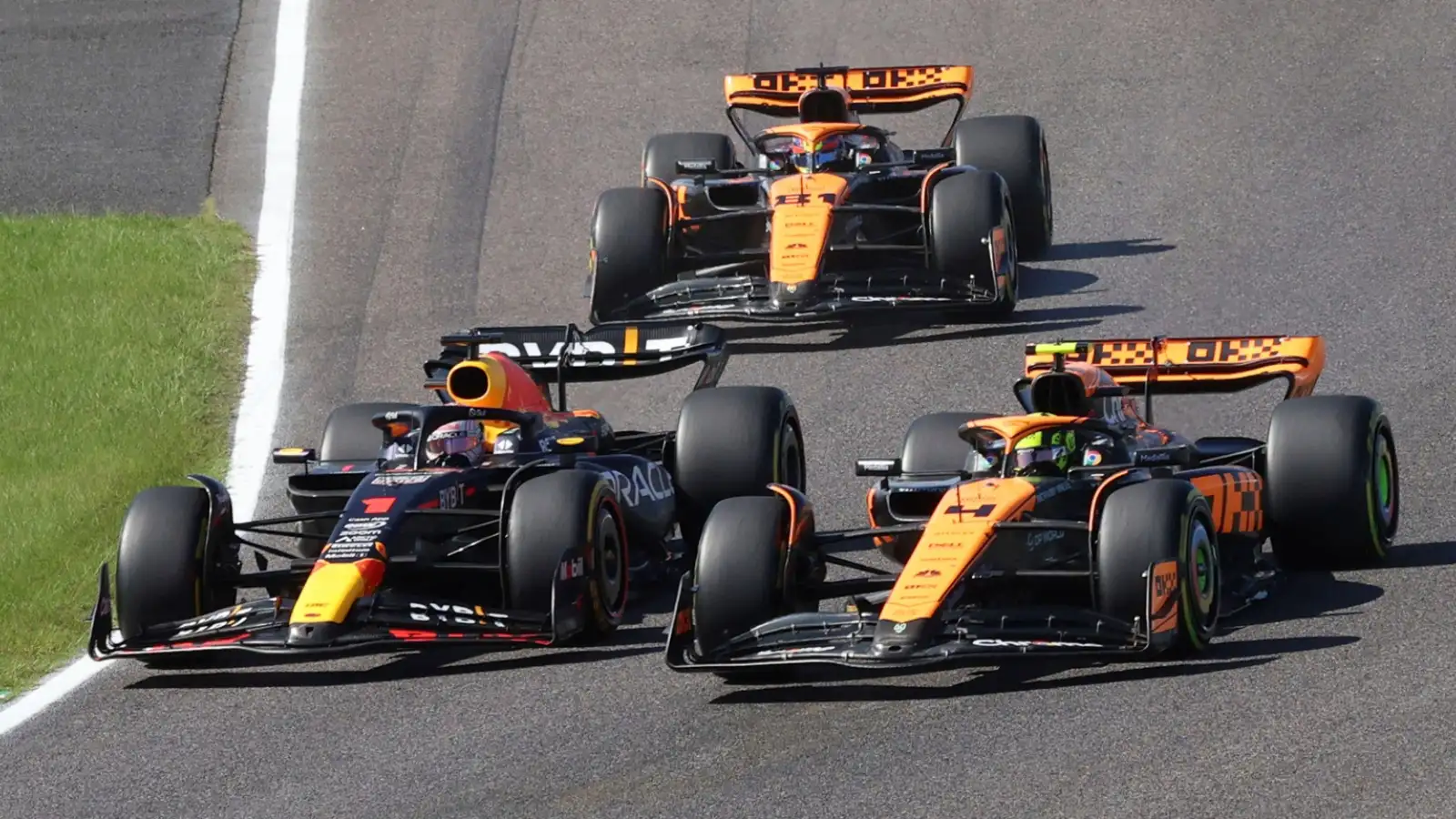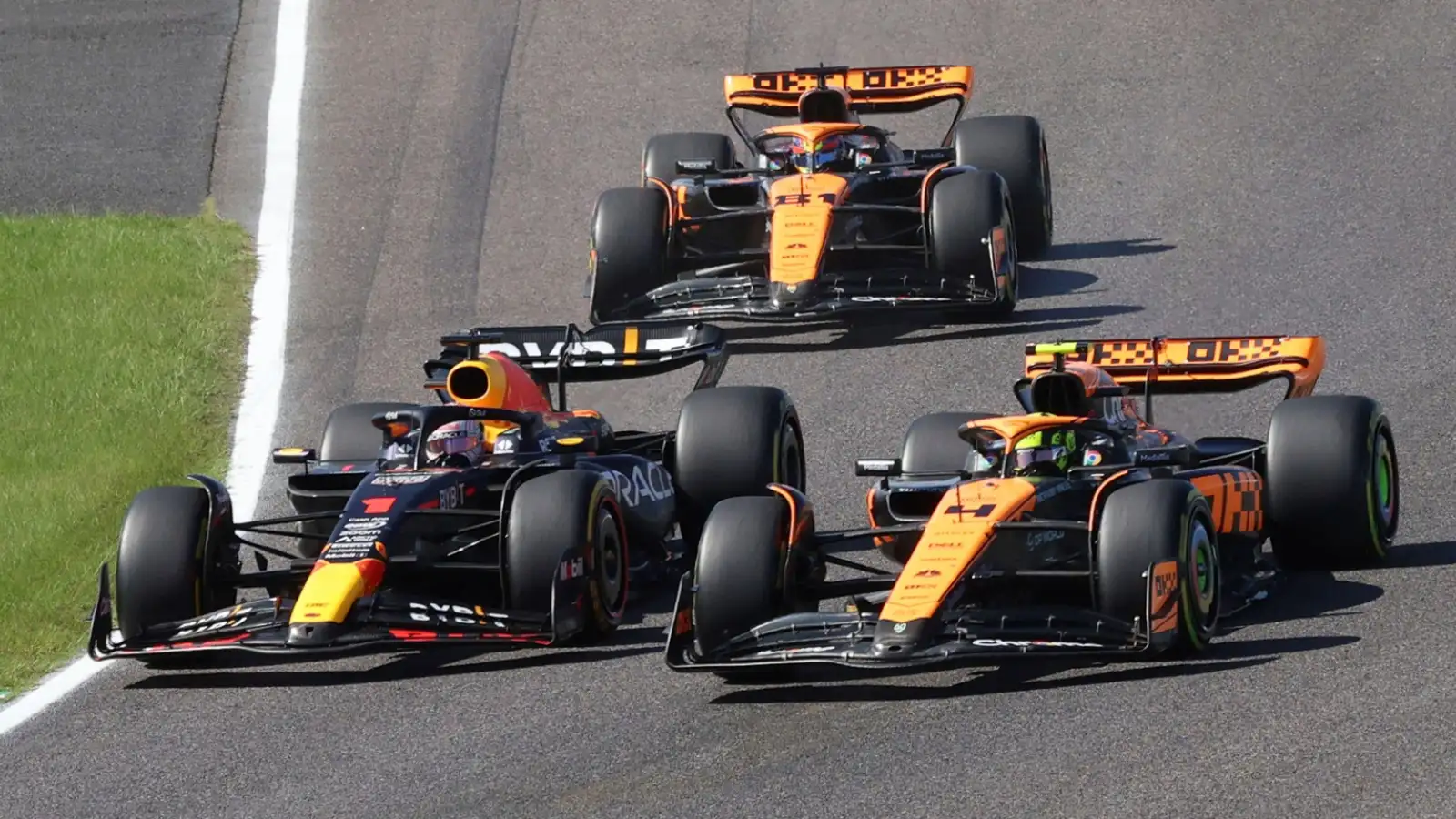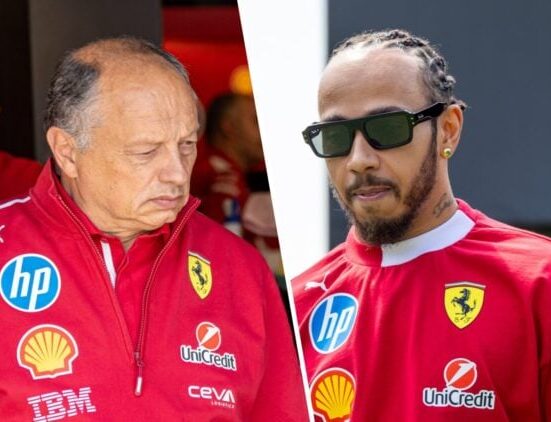Red Bull receive double wind tunnel boost as McLaren pay for title win
12 Dec 2024 8:15 AM

Red Bull and McLaren battle.
Down two places in the Constructors’ Championship, Red Bull “hate” losing but the upside is they have additional ATR time going into 2025 when they can also start working on the all-new ’26 car.
Red Bull and their junior team, Racing Bulls, are the two big winners under Formula 1’s Aerodynamic Testing Restriction [ATR] scale.
Red Bull are the big winners in 2025 ATR reset
ATR governs the regulations that limit the amount of time and resources teams can use in the windtunnel and CFD items based on a sliding scale that is determined by a team’s position in the Constructors’ Championship.
It’s reset in the middle of the year based on the standings on 30 June and then again at the end of the year.
30 June, the day of the Austrian Grand Prix, it was Red Bull who were leading the Constructors’ standings on 355 points ahead of Ferrari, McLaren and Mercedes.
13 races later when the season concluded in Abu Dhabi, it was McLaren up in P1 ahead of Ferrari, Red Bull and Mercedes.
As such Red Bull are the big winners, as, for the first time since the ATR scale was introduced, they are not P1. That means they have 80 per cent of the allotted time, 256 windtunnel runs and 1600 CDF items.
McLaren are the big losers, as their tally has been slashed to 224 runs and 1400 hours. Ferrari and Mercedes remain unchanged.
Red Bull’s junior team Racing Bulls are the other big winner as they dropped from sixth in the standings after the Austrian Grand Prix to eighth at the end of the season. That’s an extra 32 windtunnel runs and 200 CFD items.
F1 2025 World Champion loading…
👉Official: F1 2025 calendar announced
👉F1 2025 driver line-up: Who is already confirmed for the 2025 grid?
Red Bull and McLaren react to ATR changes
Red Bull team boss Christian Horner admitted that while the team wasn’t happy about losing the Constructors’ title, the “upside” is the extra ATR time, especially in the build-up to 2026 when the sport will put all-new cars on the track.
The teams can begin working on the aerodynamics of the 2026 cars on 1 January 2025.
“It’s a tough one,” Horner said of losing the teams’ title, ” because we have the biggest regulation change in probably 50 or 60 years in the history of the sport.
“We hate finishing third in the championship, but the additional windtunnel time that comes with that is the only upside in a year where there is such a dramatic regulatory change [in 2026].
“It’s a constant balancing act and if you are in the title battle, inevitably your development gets dragged into the season longer.”
As for McLaren, who have lost time, team principal Andrea Stella said: “You would always take P1 in the championship and then see how you can improve your efficiency in terms of aerodynamic development in the combination of CFD and windtunnel time.
“Chasing efficiency is not only thanks to the windtunnel, but is in the whole approach to aerodynamic development. We have experienced ourself that even if you have more and more restrictions, from a development point of view, the way you generate the knowledge, the efficiency, is by far the most important thing.
“It’s not like because I have three times the windtunnel time, I will necessarily develop the car three times faster. So it’s not necessarily about quantity, we are very much investing in quality of development.”
Read next: Honda ‘pray’ for Tsunoda promotion after final Red Bull discussions










Leave feedback about this